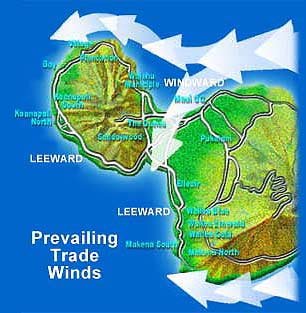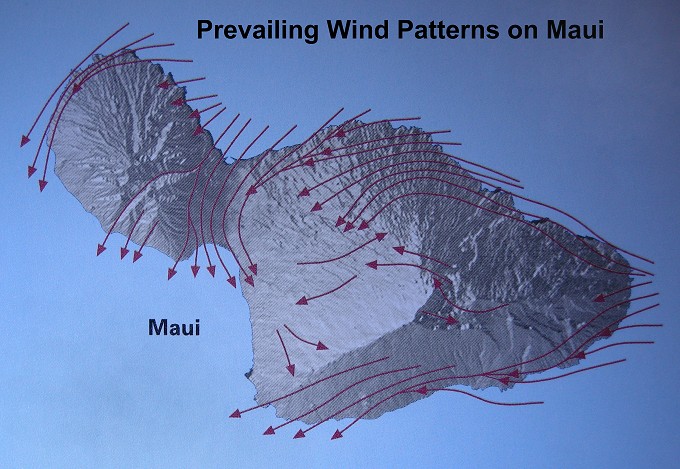Maui’s Wind vs Surf Situation Explained
Surf reporter Carlos Rock is an experienced surfing instructor who has been riding Maui’s waves his entire life.
By Carlos Rock
All Maui needs to produce excellent waves all the time is light winds joined with a good swell.
The island is more known for it’s windsurfing than its surfing, despite being home to more than a few legendary waves.
Windsurfers travel from all over the world to sail Ho’okipa on the north shore. It is the mecca of windsurfing. That’s because it is always windy.
Majority of the time the tradewinds are blowing from the northeast/east at about 10 to 20 mph. And while most find the wind refreshing and cooling, surfers deal with the crappy onshore winds that turn good waves into mush.
That is just the geography of Maui: it is basically a wind tunnel, or a funnel. What happens is the tradewinds blow from the northeast and they get squeezed together between the two mountains, Haleakala, and Mauna Kahalawai (more commonly referred to as the West Maui Mountains).
That wind gets amplified as it gets directed south. This is why Maalaea is always offshore, and why there are windmills in that area capturing some of the natural energy created by the wind tunnel.
Very rarely is there a day where it stays glassy and light winds for the whole day, at least during the summer.
However, during the winter, the Kona winds produce offshore wind on the north shore, translating to well-groomed waves that stand up and produce a better ride than its onshore counterpart.
Kona winds blow from a south/southwesterly direction and are the complete opposite to tradewinds. Kona winds do not only create ideal wind for surfing, but also, unfortunately, bring with it volcanic fog (vog) from the very active volcano on the Big Island, Kilauea.
The vog just sits on top of Maui until the tradewinds come back and send it back towards the Big Island.
However, when the “Konas” do coincide with a very solid swell, waves are as good as waves get on Maui. It is what most experienced surfers spend all year thinking about because when the conditions are right, 10 feet and Konas, it is better to feel ready, mentally and physically, for the conditions than to not be able to take advantage of the very rare day of days that you will remember for a long time: The swells that you tell your friends, kids, and in-laws about – they are almost always coupled with Kona winds.
But, the Kona winds only happen a few times a year, which is enough to keep you satisfied. One day of incredible surfing makes the 300 days of onshore mush all worth it.
So, Maui is very affected by its wind and most people pay it no mind. But to surfers, it dictates every day.
Get used to the onshore wind if you are not already – it is here to stay.












